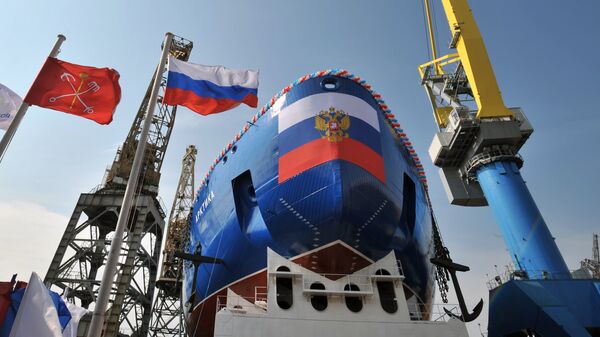"Of course, they are unchanged," Likhachev said, answering whether plans to commission the icebreaker in the first half of 2020 were unchanged.
Arktika's first sea trials, which tested the ship’s navigation and backup diesel generators, began in December. However, due to the need to firm up the turbine part of the nuclear-powered submarine, the first stage of the trials was diesel-powered, without launching the nuclear power unit, as previously planned. The sea trials program should be fully implemented with operating nuclear power unit, after which it will be commissioned to Rosatom.
The 569-foot-long icebreaker of Project 22220 has a three-shaft propulsion system with a total capacity of 60 megawatts. Two more of the project's icebreakers designed for mass production — Sibir and Ural —are set to be put commissioned in November 2020 and November 2021.
Arktika-class nuclear icebreakers will be able to escort caravans of ships in Arctic conditions, breaking up to three meters of ice while accompanying vessels carrying hydrocarbon raw materials from the Yamal and Gydan peninsulas and the Kara Sea shelf to the markets of the Asia-Pacific region.


